 After a string of arguably mediocre releases, Laibach return with anunparallelled strength and urgency that basically invalidates thescores of modern post-post-industrial electronic body music pollutingdark clubs and college radio programs with horrible lines about deadlylove obsessions or other similar whiny crap. Laibach have proven in thepast with albums like Kapital and Opus Dei that they are capable of forceful electronic masterpieces, and with records like Krst-Pod Triglavom: Baptism and Macbeth,their love for theatrical grandeur show their ability to step out ofthe mold with anthemic treasures. Teamed up with two of NovaMute'stechno champions Iztok Turek and Umek, the results are nothing lessthan stellar. While plenty of european guys dress in black proclaimingthat we can dance as the world crumbles, Laibach is hands down the mostconvincing. There's no equal for the gritty, low lead voice and choralvocals combined with the loud and punchy syntheitics on tracks like "DuBist Unser," and songs like the "Achtung!," "Hell: Symmetry," and thealbum's single "Tanz Mit Laibach" (a nod to DAF) could easily set anyrivethead-filled industrial dancefloor on fire. There are other usesfor the record too: I personally found myself saved by it on publictransportation, which I absolutely hate taking when the inclementweather prevents me from cycling in to work and the loathsome commuterssniffling, sneezing and forcing me to stand piss me off.Doublep-tracked vocals on songs like "Ende" are ear-ticklinglydelicious. English-sung songs can almost be too comical to bear, sometimes. "Barbarians are coming...they'll burn down your cities andDisneylands...they will turn into snakes and you're better off dead ifthey crawl in your bed" is almost laughable on the song "Now YouWill Pay," making me long for a German version so I don't shoot waterout of my nose. There isn't a dull milisecond and the album never losesits strength. Be very careful, however, as the music can be sohypnotizing, that potentially damaging loud volumes are quitedesirable.
After a string of arguably mediocre releases, Laibach return with anunparallelled strength and urgency that basically invalidates thescores of modern post-post-industrial electronic body music pollutingdark clubs and college radio programs with horrible lines about deadlylove obsessions or other similar whiny crap. Laibach have proven in thepast with albums like Kapital and Opus Dei that they are capable of forceful electronic masterpieces, and with records like Krst-Pod Triglavom: Baptism and Macbeth,their love for theatrical grandeur show their ability to step out ofthe mold with anthemic treasures. Teamed up with two of NovaMute'stechno champions Iztok Turek and Umek, the results are nothing lessthan stellar. While plenty of european guys dress in black proclaimingthat we can dance as the world crumbles, Laibach is hands down the mostconvincing. There's no equal for the gritty, low lead voice and choralvocals combined with the loud and punchy syntheitics on tracks like "DuBist Unser," and songs like the "Achtung!," "Hell: Symmetry," and thealbum's single "Tanz Mit Laibach" (a nod to DAF) could easily set anyrivethead-filled industrial dancefloor on fire. There are other usesfor the record too: I personally found myself saved by it on publictransportation, which I absolutely hate taking when the inclementweather prevents me from cycling in to work and the loathsome commuterssniffling, sneezing and forcing me to stand piss me off.Doublep-tracked vocals on songs like "Ende" are ear-ticklinglydelicious. English-sung songs can almost be too comical to bear, sometimes. "Barbarians are coming...they'll burn down your cities andDisneylands...they will turn into snakes and you're better off dead ifthey crawl in your bed" is almost laughable on the song "Now YouWill Pay," making me long for a German version so I don't shoot waterout of my nose. There isn't a dull milisecond and the album never losesits strength. Be very careful, however, as the music can be sohypnotizing, that potentially damaging loud volumes are quitedesirable. samples:



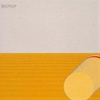 The second in Die Stadt's ambitious reissue project covering 18 of Tietchens' early releases, 1980's Biotop sees the artist venturing further into the quirky pop idiom that his debut Adventures in Soundonly hinted at. Each track is a rich, two-minute exercise in Tietchens'inimitable melodic style, filtered through vintage synths and drummachines, receiving their own portraits in the liner notes. Tietchenshas also imagined a troupe of synth-wielding goofs as his backing band(Das Zeitzeichenorchester?"the time-signal orchestra"), all with namesthat are anagrams of the composer's, including Stu 'The Cute' Sins.This brand of humor helps to foreground the music inside, which, forall its melodicism, comes with a noticeable sense of detachment. Whilesimilar in mood to the surreal, coldly cinematic electropop of hiscontemporaries, Der Plan, and modern-day wunderkind Felix Kubin,Tietchens' Biotop pushes the pop further into space, weavingheady, claustrophobic atmospherics in and out of each robotic beat anddated synth whirl. This music does show its age, but it almost works in favor of the strange environment conjured. Even at its most bouncy or sweet, Biotopkeeps a bizarre, grainy distance, invoking the kind of antique futurismgroups like Trans Am wish they had it in them to create. Tietchens hassaid that, at the time, he was intentionally writing songs with no basslines, in order to erase any commercial potential the record mighthave. Listening today, however, I'm thinking his plan may havebackfired as many of these songs approach what I'd imagine radiojingles of the future to sound like. Coincidentally it was Tiechens'mentor Okko Bekker who said that the sparse and concise nature of thesesongs reminded him of radio time-signals, kind of like old-fashionedstation-IDs. For such a (relatively) straight-forward piece of work, Biotopstrikes me, ironically, as lacking the personality that makes many ofTietchens' more inaccessible, recent releases stand above the rest.That said, the album is a fascinating, elusive little creation,valuable apart from its status as a document of the brilliantmusician's formative years.
The second in Die Stadt's ambitious reissue project covering 18 of Tietchens' early releases, 1980's Biotop sees the artist venturing further into the quirky pop idiom that his debut Adventures in Soundonly hinted at. Each track is a rich, two-minute exercise in Tietchens'inimitable melodic style, filtered through vintage synths and drummachines, receiving their own portraits in the liner notes. Tietchenshas also imagined a troupe of synth-wielding goofs as his backing band(Das Zeitzeichenorchester?"the time-signal orchestra"), all with namesthat are anagrams of the composer's, including Stu 'The Cute' Sins.This brand of humor helps to foreground the music inside, which, forall its melodicism, comes with a noticeable sense of detachment. Whilesimilar in mood to the surreal, coldly cinematic electropop of hiscontemporaries, Der Plan, and modern-day wunderkind Felix Kubin,Tietchens' Biotop pushes the pop further into space, weavingheady, claustrophobic atmospherics in and out of each robotic beat anddated synth whirl. This music does show its age, but it almost works in favor of the strange environment conjured. Even at its most bouncy or sweet, Biotopkeeps a bizarre, grainy distance, invoking the kind of antique futurismgroups like Trans Am wish they had it in them to create. Tietchens hassaid that, at the time, he was intentionally writing songs with no basslines, in order to erase any commercial potential the record mighthave. Listening today, however, I'm thinking his plan may havebackfired as many of these songs approach what I'd imagine radiojingles of the future to sound like. Coincidentally it was Tiechens'mentor Okko Bekker who said that the sparse and concise nature of thesesongs reminded him of radio time-signals, kind of like old-fashionedstation-IDs. For such a (relatively) straight-forward piece of work, Biotopstrikes me, ironically, as lacking the personality that makes many ofTietchens' more inaccessible, recent releases stand above the rest.That said, the album is a fascinating, elusive little creation,valuable apart from its status as a document of the brilliantmusician's formative years. 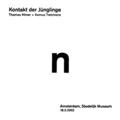 The fourth CD release from Asmus Tietchens and Thomas Köner's collaborative project Kontakt der Jünglinge, nis the duo's strongest work to date. Like their other releases, thedisc is drone-heavy, consisting of one 40+ minute live improvisation,dominated by huge bell tones and what sound like recordings of rushingwind, delayed, looped and exploded along a slow evolution. Whileprevious efforts warranted descriptors like "barren" and "bleak," basedon their preference for more acute, concr?te-associated sounds orsparse assembly, n is the first Kontakt der Jünglinge releaseto which these words apply in a comprehensive way. Tietchens and Könerwork together in seamless fashion, arranging sounds that define theboundaries of spaces rather than concentrating on details or eventswithin. The piece succeeds in avoiding the more recognizable orassociative sounds that appeared on earlier releases while creating arich, more easily inhabitable sound-world, in this case something likea vacuous region of deep space. The title, a break from the lineartitles of the first three collaborations (1, 0, -1),also suggests that this fourth disc deals with sounds of a moreelemental nature or offers a purification of the ideas posited by itspredecessors. Just words, yes, but very few things can fill a room likethis.
The fourth CD release from Asmus Tietchens and Thomas Köner's collaborative project Kontakt der Jünglinge, nis the duo's strongest work to date. Like their other releases, thedisc is drone-heavy, consisting of one 40+ minute live improvisation,dominated by huge bell tones and what sound like recordings of rushingwind, delayed, looped and exploded along a slow evolution. Whileprevious efforts warranted descriptors like "barren" and "bleak," basedon their preference for more acute, concr?te-associated sounds orsparse assembly, n is the first Kontakt der Jünglinge releaseto which these words apply in a comprehensive way. Tietchens and Könerwork together in seamless fashion, arranging sounds that define theboundaries of spaces rather than concentrating on details or eventswithin. The piece succeeds in avoiding the more recognizable orassociative sounds that appeared on earlier releases while creating arich, more easily inhabitable sound-world, in this case something likea vacuous region of deep space. The title, a break from the lineartitles of the first three collaborations (1, 0, -1),also suggests that this fourth disc deals with sounds of a moreelemental nature or offers a purification of the ideas posited by itspredecessors. Just words, yes, but very few things can fill a room likethis. Devoted followers of cult obscurantist acts like Nurse With Wound havebecome accustomed, over the years, to their favorite music being issuedin absurdly limited "special" editions, created to be hopelesslyobscure within a month of their release. I couldn't recount all of theinstances when I have heard of a new release being offered in alimited, numbered edition of 100 handmade copies on transparent vinyl,with unique art objects, the first 10 orders including an exclusivebonus 7" smeared with the artist's bodily fluids, and one extra specialcopy containing a golden ticket entitling the holder to visit theartist's home and take liberties with their pet. As frustrating asthese ultra-limited releases can be, ardent devotees still hold out thehope that with vigilance, cunning and a fair amount of cash, they canpossess their own piece of the dream. Now, the lovely, talented andextraordinarily perverse folks at Bronson Unlimited Records have justupped the ante and blown all hope into the stratosphere with therelease of one of the more unique limited editions in recent memory. Goat Woundis a tribute to the work of Nurse With Wound - 25 artists from aroundthe world anonymously contributed an original untitled piece as anaudio tribute to Steven Stapleton. The tracks are divided among six 3"compact discs with individual, reversible interlocking puzzle panelcovers, a Goat Wound postcard and a pewter goat statue, all ofwhich is housed in a handmade, art inlaid wooden box. The catch: Thisis truly a one-of-a-kind tribute to Steven Stapleton, and only StevenStapleton. As unbelievable as it sounds, Goat Wound is limitedto only one copy, which was shipped directly to Cooloorta Farm upon itscompletion. No one, not even the label itself or the artists involved,will ever be able to own a copy of the set. In addition, the 25 artistshave each relinquished all copyright claims to the work on Goat Wound,freeing Steven Stapleton to use the music as raw materials for futuresound sculptures, should he choose. The only relic that remains for thecurious public is Bronson Unlimited's fantastic
Devoted followers of cult obscurantist acts like Nurse With Wound havebecome accustomed, over the years, to their favorite music being issuedin absurdly limited "special" editions, created to be hopelesslyobscure within a month of their release. I couldn't recount all of theinstances when I have heard of a new release being offered in alimited, numbered edition of 100 handmade copies on transparent vinyl,with unique art objects, the first 10 orders including an exclusivebonus 7" smeared with the artist's bodily fluids, and one extra specialcopy containing a golden ticket entitling the holder to visit theartist's home and take liberties with their pet. As frustrating asthese ultra-limited releases can be, ardent devotees still hold out thehope that with vigilance, cunning and a fair amount of cash, they canpossess their own piece of the dream. Now, the lovely, talented andextraordinarily perverse folks at Bronson Unlimited Records have justupped the ante and blown all hope into the stratosphere with therelease of one of the more unique limited editions in recent memory. Goat Woundis a tribute to the work of Nurse With Wound - 25 artists from aroundthe world anonymously contributed an original untitled piece as anaudio tribute to Steven Stapleton. The tracks are divided among six 3"compact discs with individual, reversible interlocking puzzle panelcovers, a Goat Wound postcard and a pewter goat statue, all ofwhich is housed in a handmade, art inlaid wooden box. The catch: Thisis truly a one-of-a-kind tribute to Steven Stapleton, and only StevenStapleton. As unbelievable as it sounds, Goat Wound is limitedto only one copy, which was shipped directly to Cooloorta Farm upon itscompletion. No one, not even the label itself or the artists involved,will ever be able to own a copy of the set. In addition, the 25 artistshave each relinquished all copyright claims to the work on Goat Wound,freeing Steven Stapleton to use the music as raw materials for futuresound sculptures, should he choose. The only relic that remains for thecurious public is Bronson Unlimited's fantastic 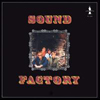 Of all the tracks included on the Brazilian volume of the excellent Love, Peace, & Poetrypsych comp series, Sound Factory's "Let's Go" is by far the strangest.The song tries at a fairly generic, surf-influenced groove, but comesoff sounding more like a cautionary tale against heavy acid use, ahideously top-heavy mix capped off by singer Kevin Brennan's falsetto,so bad it's honestly not even funny. The song is a sad but perfectintroduction to the band's single, thoroughly obscure album, reissuedlast year by Shadoks. Sound Factory cannot be explained away asan amateur psych record or even as a novelty for the collectors marketalone. Something about the group protects them from seeming either tooincompetent or too generic for the adventurous listener. Seven of thesongs are covers (Cream, Traffic, Jefferson Airplane, and Blind Faithamong others), lending the automatic charm that comes with foreignersborrowing so directly (and almost exclusively) from theBritish/American rock canon. Portuguese accents get bent awkwardlyaround Robert Johnson's wail, and a Tropicalian lilt is brought to thestodgiest of thick, white rock, shoddily-played and cheaply-recorded;while it might be easy to call this music unoriginal, it's impossibleto say it's no fun. Missteps like "Let's Go" transcend camp valuebecause they are almost too obtrusive or annoying for even a committednovelty enthusiast to stomach. Novelty gets left behind for a stranger,more rarified appeal, as if the group's unintentionally off-kilterapproach prevents them from being so quickly placed or dated. A fewmoments of truly exceptional musicianship further complicate things.The guitar and bass players are undoubtedly skilled, their inventiveparts frequently coming into odd juxtaposition with clumsier sections.Brennan's solos are at times masterful Hendrix-isms, made more enticingby their frequent burial deep in the mix, and drummer Trajano's shakycroon gives two Steve Winwood classics a fragility that, professionalor not, lends a new beauty to the tired songs. The result is a recordcharming for its amateur-ish exuberance but also thrilling in the waythe band conquers its limitations, managing an addictive, ifidiosyncratic sound. -
Of all the tracks included on the Brazilian volume of the excellent Love, Peace, & Poetrypsych comp series, Sound Factory's "Let's Go" is by far the strangest.The song tries at a fairly generic, surf-influenced groove, but comesoff sounding more like a cautionary tale against heavy acid use, ahideously top-heavy mix capped off by singer Kevin Brennan's falsetto,so bad it's honestly not even funny. The song is a sad but perfectintroduction to the band's single, thoroughly obscure album, reissuedlast year by Shadoks. Sound Factory cannot be explained away asan amateur psych record or even as a novelty for the collectors marketalone. Something about the group protects them from seeming either tooincompetent or too generic for the adventurous listener. Seven of thesongs are covers (Cream, Traffic, Jefferson Airplane, and Blind Faithamong others), lending the automatic charm that comes with foreignersborrowing so directly (and almost exclusively) from theBritish/American rock canon. Portuguese accents get bent awkwardlyaround Robert Johnson's wail, and a Tropicalian lilt is brought to thestodgiest of thick, white rock, shoddily-played and cheaply-recorded;while it might be easy to call this music unoriginal, it's impossibleto say it's no fun. Missteps like "Let's Go" transcend camp valuebecause they are almost too obtrusive or annoying for even a committednovelty enthusiast to stomach. Novelty gets left behind for a stranger,more rarified appeal, as if the group's unintentionally off-kilterapproach prevents them from being so quickly placed or dated. A fewmoments of truly exceptional musicianship further complicate things.The guitar and bass players are undoubtedly skilled, their inventiveparts frequently coming into odd juxtaposition with clumsier sections.Brennan's solos are at times masterful Hendrix-isms, made more enticingby their frequent burial deep in the mix, and drummer Trajano's shakycroon gives two Steve Winwood classics a fragility that, professionalor not, lends a new beauty to the tired songs. The result is a recordcharming for its amateur-ish exuberance but also thrilling in the waythe band conquers its limitations, managing an addictive, ifidiosyncratic sound. -  For 20 years, Matthew Bower's Skullflower has been widely influentialin the noise scene, evolving a signature sound over time to incorporatethe amplified drones, repetition and ?ber-psychedelic noise thatcharacterizes the recent works. Bower's sister group Sunroof! usessimilar distortion-pushing strategies, but serves as an outlet forgentler, trancelike, even transcendent applications of dissonance andnoise. Cloudzis perhaps Bower's most meditative album yet, taking a clear step backfrom atonality and adding fuller instrumentation that threatens to addmelody and rhythm to the abstract sound sculptures. 2003 was a banneryear for Matthew Bower, with the release of Skullflower's trance-metalmasterpiece Exquisite Fucking Boredom, the subsequent tour with Vibracathedral Orchestra, and now Cloudz, which is probably Sunroof!'s strongest album yet, with the possible exception of 2001's double-album Bliss. Cloudzclimbs into a rarefied strata; noise that is blissed-out and beatific,but also intense, shamanistic and loud as hell. "Machine" creates acushion of distortion that lifts a scattered piano melody into the jetstream, before transforming into a maze of electronic blurps, redolentof the giant god-computer in the sky detailed by Philip K. Dick in hisGnostic exegesis. Further into this astral temple of cumulonimbusgnosticism comes the urgent dot-matrix rhythms of "Grasshopper,"followed quickly by the ratcheting beats and lysergic reverberations of"Viva." "Zero" is a bright evocation of Krautrock, something like aNeu! track scrubbed with steel wool: motorik beats smeared withhigh-pitched glitches and squiggles. "Universal Acceleration" is afloating steam calliope bubbling up into the heady, stoned atmosphereon a pillow of Nintendo sound effects. "Tornado Rose Canoe" is thehighlight, a senseless electric guitar solo that shoots straight forthe third-eye and throws off all manner of hallucinogenic streamers."Silver Nazi Suicide" is this set's most challenging track, a richlydetailed 12-minute excursion into carnivalesque bells, horns andshakahuchi that absolutely hypnotized me. The insect drones of"Primavera" and the clean, hicupping digital washes and vocoderizedchanting of "Silver Zero" end the disc on a note of futuristic nirvana.After being pushed into the loftiest firmaments of this heavenly templeof drone, I've been ushered into a binary landscape of mantra-spewingrobot gods. After a few more spins of Cloudz, I hope to master their language.
For 20 years, Matthew Bower's Skullflower has been widely influentialin the noise scene, evolving a signature sound over time to incorporatethe amplified drones, repetition and ?ber-psychedelic noise thatcharacterizes the recent works. Bower's sister group Sunroof! usessimilar distortion-pushing strategies, but serves as an outlet forgentler, trancelike, even transcendent applications of dissonance andnoise. Cloudzis perhaps Bower's most meditative album yet, taking a clear step backfrom atonality and adding fuller instrumentation that threatens to addmelody and rhythm to the abstract sound sculptures. 2003 was a banneryear for Matthew Bower, with the release of Skullflower's trance-metalmasterpiece Exquisite Fucking Boredom, the subsequent tour with Vibracathedral Orchestra, and now Cloudz, which is probably Sunroof!'s strongest album yet, with the possible exception of 2001's double-album Bliss. Cloudzclimbs into a rarefied strata; noise that is blissed-out and beatific,but also intense, shamanistic and loud as hell. "Machine" creates acushion of distortion that lifts a scattered piano melody into the jetstream, before transforming into a maze of electronic blurps, redolentof the giant god-computer in the sky detailed by Philip K. Dick in hisGnostic exegesis. Further into this astral temple of cumulonimbusgnosticism comes the urgent dot-matrix rhythms of "Grasshopper,"followed quickly by the ratcheting beats and lysergic reverberations of"Viva." "Zero" is a bright evocation of Krautrock, something like aNeu! track scrubbed with steel wool: motorik beats smeared withhigh-pitched glitches and squiggles. "Universal Acceleration" is afloating steam calliope bubbling up into the heady, stoned atmosphereon a pillow of Nintendo sound effects. "Tornado Rose Canoe" is thehighlight, a senseless electric guitar solo that shoots straight forthe third-eye and throws off all manner of hallucinogenic streamers."Silver Nazi Suicide" is this set's most challenging track, a richlydetailed 12-minute excursion into carnivalesque bells, horns andshakahuchi that absolutely hypnotized me. The insect drones of"Primavera" and the clean, hicupping digital washes and vocoderizedchanting of "Silver Zero" end the disc on a note of futuristic nirvana.After being pushed into the loftiest firmaments of this heavenly templeof drone, I've been ushered into a binary landscape of mantra-spewingrobot gods. After a few more spins of Cloudz, I hope to master their language. 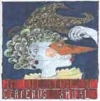 So far, this split series has been a smorgasbord of tasty morsels thatleft me coming back for more. It had to happen sooner or later thatthere would be a dish that I'd want to pass on, and that's the casewith Life & Times.The Shoal have gotten the closest to becoming one with the other bandon this edition, but the results are not particularly remarkable ornoteworthy. In fact, a lot of it comes off like filler, or a perpetualwait for something that may or may not ultimately arrive. The firsttrack, though featuring some nice atmospherics and vocal effects, isnothing more than an introduction of what the listener is about tohear, as well as a thank you for listening thus far. It's unnecessary,as most are probably buying the EP on the name recognition of CerberusShoal alone, and it's a bit heavy-handed in areas, like a long-windedSunday gospel about the importance of holding your head up. After that,the music assumes the shape of a low gurgle and whisper routine, slowlyraising over a low chirp into the peaks and valleys of various melodicexperiments. I had grown fond of the bombast of previous collaborationsand thought maybe this was just a temporary departure, but it continuesfor the whole release, never quite forming a congruous whole. There ishope on the third track, "Continuumed," as structure seeps in and atrue song emerges, but then the fourth track offers more of the samesonic tinkering. Unfortunately, the end result sounds like just someknob twiddling and experimentations with effects and small chordprogressions and melodies rather than a true collaborative effort onsweeping compositions like the previous CDs in the series. I was leftmissing the latter, and though their is obviously a great deal ofcreativity and talent at work, it just didn't affect me the way I'dhoped it would.
So far, this split series has been a smorgasbord of tasty morsels thatleft me coming back for more. It had to happen sooner or later thatthere would be a dish that I'd want to pass on, and that's the casewith Life & Times.The Shoal have gotten the closest to becoming one with the other bandon this edition, but the results are not particularly remarkable ornoteworthy. In fact, a lot of it comes off like filler, or a perpetualwait for something that may or may not ultimately arrive. The firsttrack, though featuring some nice atmospherics and vocal effects, isnothing more than an introduction of what the listener is about tohear, as well as a thank you for listening thus far. It's unnecessary,as most are probably buying the EP on the name recognition of CerberusShoal alone, and it's a bit heavy-handed in areas, like a long-windedSunday gospel about the importance of holding your head up. After that,the music assumes the shape of a low gurgle and whisper routine, slowlyraising over a low chirp into the peaks and valleys of various melodicexperiments. I had grown fond of the bombast of previous collaborationsand thought maybe this was just a temporary departure, but it continuesfor the whole release, never quite forming a congruous whole. There ishope on the third track, "Continuumed," as structure seeps in and atrue song emerges, but then the fourth track offers more of the samesonic tinkering. Unfortunately, the end result sounds like just someknob twiddling and experimentations with effects and small chordprogressions and melodies rather than a true collaborative effort onsweeping compositions like the previous CDs in the series. I was leftmissing the latter, and though their is obviously a great deal ofcreativity and talent at work, it just didn't affect me the way I'dhoped it would. 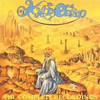 Hindsight is 20/20: wide-eyed dreamers of yesteryear once marveled atthe thought of flying cars that would dominate our world's skyways andfreedom from the ever-present red menace that threatened to consume orway of life. How na?ve, they were. Today we lurch around in behemothsport utility vehicles and the followers of Lindon LaRouche still annoyus at many urban street corners. Now, those fantasies seem somewhatoutmoded, antiquated, and quaint. So too, I feel, is much of the realmof progressive rock that cropped up in the 1970s. What aspired to finddepth and insight in what had before been trashy rock music too oftenmushroomed into purple prose and exercises in rambling fantasy imagery.Case in point: Kyrie Eleison, yet another compilation of recordingsfrom a "lost" band, overlooked in its time and ready for their momentto shine. Rather than coming off as an artifact to be studied andappreciated, The Complete Recordingsreveals itself to be much more of a fossil, thin and desiccated,utterly without context, and to put it simply—with no meat on itsbones. Tentative, Phantom of the Opera organ tones lull along the slowmelodies that buffer up against distorted guitar and thick thuddrumming. Nothing particularly remarkable stands out, even in theirgrandiose solo sections where the members launch into perfunctory apingof obvious influences like early Genesis. The lyrics are mystifying,but not in a majestic way, merely in that they don't seem to have beenworked with much. The influences now seem more akin to Led Zeppelin's"Ramble On" and "Gollum, the eeeevil one." On "A Friend," they blow thelid off of this whole civilization sham with lines like "You know you're caught in the trap / A trap of human beings / Calling yourselves society / A trap," a decidedly dark albeit banal claim that they fail to back up with the preschool sing-a-long style lines that follow: "If a friend is happy / It's pleasure for you / If a friend has lost something / It's a loss of yours too."Anarchy and fraternity all in one song, it's something that most bandswould not be able to pull off—and Kyrie Eleison is one of those bandsthat can't. They stumble further in their quest to encapsulate what iswrong with our societal trap on another track, declaring "You can hate the world / It will hate you / 'cause it's wars is hate / And hate is a war / You are a wonderer."(I copied that from the lyric sheet, that's not a mishearing.)Somewhere in the middle it seems to lose any kind of syntax or meaning.From "Reign": "I'd like to kick you in your bums / But brothers would take their giant guns / Shoot brutality into my brain." For sure a daft line, but not a terrible capsule review of this overblown compilation. The Complete Recordingsseems like another example of basement diving music archivists lookingto pass off the chaff of its era as a maligned work of wonder. Trackdown the lyrics sheet if you can, as it can be rather amusing. -
Hindsight is 20/20: wide-eyed dreamers of yesteryear once marveled atthe thought of flying cars that would dominate our world's skyways andfreedom from the ever-present red menace that threatened to consume orway of life. How na?ve, they were. Today we lurch around in behemothsport utility vehicles and the followers of Lindon LaRouche still annoyus at many urban street corners. Now, those fantasies seem somewhatoutmoded, antiquated, and quaint. So too, I feel, is much of the realmof progressive rock that cropped up in the 1970s. What aspired to finddepth and insight in what had before been trashy rock music too oftenmushroomed into purple prose and exercises in rambling fantasy imagery.Case in point: Kyrie Eleison, yet another compilation of recordingsfrom a "lost" band, overlooked in its time and ready for their momentto shine. Rather than coming off as an artifact to be studied andappreciated, The Complete Recordingsreveals itself to be much more of a fossil, thin and desiccated,utterly without context, and to put it simply—with no meat on itsbones. Tentative, Phantom of the Opera organ tones lull along the slowmelodies that buffer up against distorted guitar and thick thuddrumming. Nothing particularly remarkable stands out, even in theirgrandiose solo sections where the members launch into perfunctory apingof obvious influences like early Genesis. The lyrics are mystifying,but not in a majestic way, merely in that they don't seem to have beenworked with much. The influences now seem more akin to Led Zeppelin's"Ramble On" and "Gollum, the eeeevil one." On "A Friend," they blow thelid off of this whole civilization sham with lines like "You know you're caught in the trap / A trap of human beings / Calling yourselves society / A trap," a decidedly dark albeit banal claim that they fail to back up with the preschool sing-a-long style lines that follow: "If a friend is happy / It's pleasure for you / If a friend has lost something / It's a loss of yours too."Anarchy and fraternity all in one song, it's something that most bandswould not be able to pull off—and Kyrie Eleison is one of those bandsthat can't. They stumble further in their quest to encapsulate what iswrong with our societal trap on another track, declaring "You can hate the world / It will hate you / 'cause it's wars is hate / And hate is a war / You are a wonderer."(I copied that from the lyric sheet, that's not a mishearing.)Somewhere in the middle it seems to lose any kind of syntax or meaning.From "Reign": "I'd like to kick you in your bums / But brothers would take their giant guns / Shoot brutality into my brain." For sure a daft line, but not a terrible capsule review of this overblown compilation. The Complete Recordingsseems like another example of basement diving music archivists lookingto pass off the chaff of its era as a maligned work of wonder. Trackdown the lyrics sheet if you can, as it can be rather amusing. -  Thalia Zedek is a true original, with a voice hewed by years on the road fronting aggressive outfits, her musical stylings born out of influence but still uniquely hers. Her latest is a dynamo: a strong step forward on a new label and a powerful piece of work overall.
Thalia Zedek is a true original, with a voice hewed by years on the road fronting aggressive outfits, her musical stylings born out of influence but still uniquely hers. Her latest is a dynamo: a strong step forward on a new label and a powerful piece of work overall.
